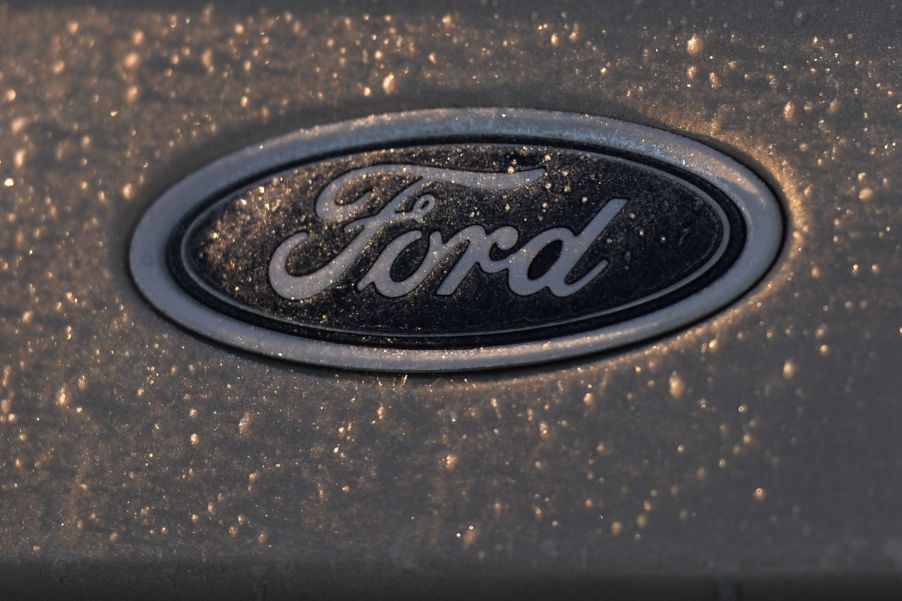
The Pandemic Has Forced Ford to Shift How It Gets Vehicles to Customers
The Ford F-150 appeared in 1975 to bridge the gap between the F-100 and the heavy-duty F-250. Ever since then, it’s become one of the automaker’s most popular trucks. However, Ford is having trouble getting the newest model built this year because of the chip shortage caused by last year’s pandemic. According to the Detroit Free Press, Ford, and other manufacturers, are feeling the heat of the shortage, and it’s wreaking havoc on its business model.
What the chip shortage has done to Ford and other automakers

Automakers across the board are struggling to get cars off the production line. Dealerships have little to no new inventory on hand to sell, so they’ve been relying on used vehicles to meet their quotas. What little new stock is found is going for thousands over sticker price. Even used models are marked up quite a bit from what they were before the pandemic.
Ford is really feeling the hit. While it’s been seeing increased sales in the last few months, the automaker can’t fulfill all of them with the shortage. Despite the 41,000 new orders received in August, Ford has had a decrease of 33% in sales since a year ago.
Those 41,000 orders aren’t yet built, which would’ve made a huge difference in the final figures. According to NBC News, Ford loses approximately $4.7 billion per 100,000 units lost. Because production in many of its plants has halted or slowed, Ford has even shut down some of its lines.
GM and Chevrolet are also feeling the hit from the shortage problems. Production of the Sierra and Silverado pickups has been cut to prioritize what’s needed the most. Most automakers are focusing on producing the most profitable vehicles first, putting others on the back burner, at least, for now. Once the chip shortage bounces back, production would then resume.
How fulfilling orders for the Ford F-150 have changed
Since the F-150 is Ford’s biggest moneymaker in the truck department, the automaker is doing what it can to fulfill all customer orders. However, the way the company is going about it is slightly different now than what they did traditionally.
Erich Merkle, the U.S. Analyst for Ford, told the Detroit Free Press, “These are customers who are waiting for vehicles rather than vehicles on lots waiting for customers.” Ford has put dealerships aside and gone straight to its customer base. Merkle goes on to say, ” It’s not a detail typically shared but it is important data point because it says vehicle demand is strong as Ford production and inventory showed strong improvement in August relative to July.”
The F-150 is typically built and sits waiting for available chips to come in, so they can install them, inspect the truck, and ship it directly to the customer who’s waiting on it. The company finds it’s more productive to do it this way than to have a completed pickup sitting on a dealership lot waiting for a buyer to come along to snatch it up.
Are experts expecting the chip shortage to end soon?
You would think with the Pandemic slowing down a little, that chip supplies would begin to rebound. However, that’s not really the case. Unfortunately, other factors are coming into play here. With the increase in people staying home, there’s an increased need for computer and gaming products, which also need chips.
Plus, with the pandemic, companies shut down for a period of time, so playing catch-up is difficult when new orders are always coming in. The shipping problems in the Suez Canal we saw earlier this year didn’t help matters either. There is a tiny bit of good news, though; chip manufacturing is starting to come to America.
However, it will take time for them to get established. In the meantime, it looks like the shortage could stretch into 2022 before we see any relief. Some experts even worry that it could extend into 2023 as well. Let’s hope it doesn’t get that far.
Ford, like many automakers, is struggling to meet the demand for its vehicles, especially its popular pickup trucks. However, it’s doing what it can for the time being. Hopefully, the chip shortage will get resolved sooner rather than later, and production lines can get back up and running.


